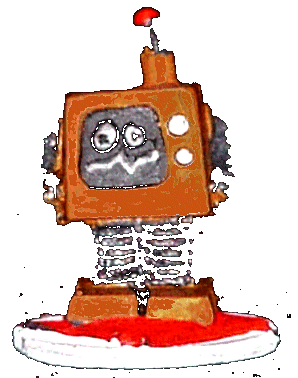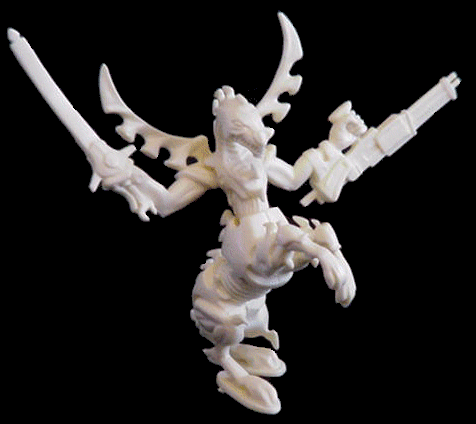
|
|
| 2+ Players | 30+ minutes |
|
Concept: Prepare your own professional wrestler & lay the smackdown on your opponent. |
|
|
Gameplay: To begin, players choose their wrestler (from stock list or the make their own). They choose a stand up pawn to represent them in the ring, and place their pawn in a corner of the ring. You will also need a six sided die (not provided by the game.) Players are dealt seven cards. Players must be prepared to play "Strike-kick-grab" constantly -- this is also known as "rock-paper-scissors". The game is played in turns, there is no turn limit, but there is a time limit. The time limit is measured in reshuffles of the card deck: When you have reshuffled the card deck as many times as there are players in the game, the match has ended. There are two phases to each turn:
Action phase Players can swap momentum many times before deciding to end the action phase Injury phase To begin the game, wrestlers "strike-kick-grab" for momentum. The winner gets momentum first. The player with momentum moves around the ring and plays cards as they want. Moving costs fatigue points on the power grid. Cards also cost fatigue points -- some cards have skill levels required to be able to execute the maneuver: if the wrestler isn't skilled enough, they can't play the card. Other cards have restrictions based on size -- a small wrestler can't play a body slam on a significantly larger wrestler. As cards are played, the players fatigue markers are moved "down" the grid. Wrestlers on the receiving end of the move lose more fatigue. Attack cards are colored green, yellow, or red -- green moves are quick and do light damage; yellow and red are slower and do heavier damage. If a wrestler tries to perform a yellow or red card, the opponent automatically gets to face you in a "strike-kick-grab" contest to see if the move worked at all. To avoid this, wrestlers need to be stunned or dizzied as a result of a previous card play. When stunned or dizzied, the "strike-kick-grab" option is removed. There are other cards that block moves or steal momentum, but the majority of cards are the attack cards. After players have decided that they don't care to have momentum anymore, the injury phase begins. The markers are moved on the grid by moving the injury marker down by the number that the fatigue marker is sitting on -- then the fatigue marker is moved back up to where the injury marker is for the next turn. Confusing? there's a picture in the rule book that explains it better... look at it there. There are two ways to win the match: pin or knockout. To pin, use a move that knocks the opponent down, and then lay down your wrestler on top of them. If your opponent can roll a number higher than the pin number on the power grid once in three chances, then he escapes. (The pin number is on the corner of the square where your injury marker is currently.) Knockout isn't that likely, so I'll leave it to the game rules to explain it to you. Finally, just like in a real pro wrestling match, you can fight outside of the ring... but if you stay out too long, you will be disqualified. |
|
|
Winning Conditions:
|
|
|
Our Opinion:
This game was originally designed to be an insert in a magazine -- the rules are fairly short and the cards are all printed on about six sheets of heavier paper: you'll have to spend some time cutting out the cards before you can play -- and they aren't a standard card size (they're smaller) so shuffling is tedious. But, despite the printing requirements of a magazine game, the game works. The game flows just like a real pro wrestling match. Once a particular wrestler gains momentum, they control the action for a short time -- usually until one of them is knocked down, and then the other wrestler gets to have their turn at abusing the first. Players who look for a quick win are likely to be disappointed... it's hard to pin an opponent until you've beaten them several turns in a row. Our biggest complaint about the rules was the power grid. The rules frequently say move the fatigue counter "down" the chart. The power grid makes no sense if you move down it... they really mean for the markers to go left to right and then wrap around to the next row below. A subsequent question to this was that the starting position on the grid depends upon your wrestler's size... the smaller the wrestler, the more right you are on the grid -- we wondered is we were supposed to wrap around to that column on the grid instead of the left most column. The lack of description about this grid is the primary weakness of the game -- one you decide how to use it, the game works fine. When we played this game, the first few turns took a long time to play -- there were a lot of rule verifications, but once we got comfortable, the turns went very fast. We could see experienced players having much faster play times than we did. A nice thing about this game is that you can create your own wrestler. This allows players to use their own creativity in creating a good wrestling strategy. If you don't want to build your own wrestler, you can use one of the stock wrestlers -- we did, and the game went splendidly. We had a major size and skill mismatch, and the match acted just like a real pro wrestling event... the big guy couldn't do many fancy moves, but he'd maul the little guy any time he could get his hands on him. As a word of warning -- if you don't like pro wrestling, avoid this game. Wrestling fans will like it -- probably quite a lot... non-fans just don't get it. It's a great priced game and has a lot of good play in it -- the rules don't really explain how to run a match with more than two wrestlers, but neither does real pro wrestling... all in all it's a great wrestling simulation. |
|
|
Where to buy: Ask your local game store to order it -- also check One Small Step's web site. It costs about $9. |
|
 Other Reviews Other Reviews
|
Zombie Main page
|